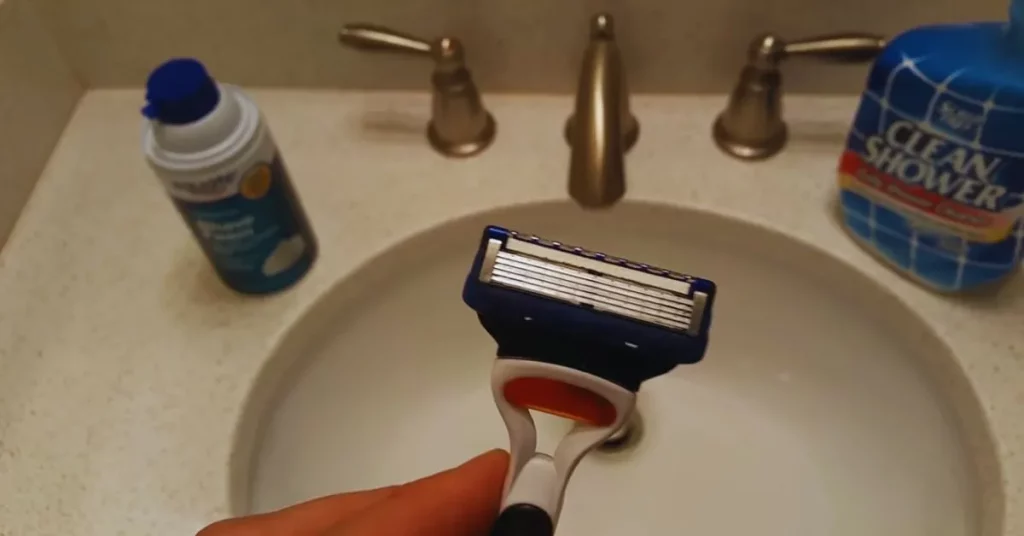As we reach for our trusty razors to achieve a clean and smooth shave, we often find ourselves frustrated by the blade’s dullness. The frequent replacement of razor blades can become a hassle and an added expense. But have you ever wondered why razor blades get dull in the first place? In this article, we will explore the reasons behind the dulling of razor blades and provide insights into how you can extend their lifespan.
Shaving has been a grooming practice dating back centuries, and over time, various tools and techniques have evolved. Today, one of the most commonly used tools is the razor blade. Whether you prefer a disposable razor or a cartridge-based system, the frustration of a dull blade remains universal.
Before we delve into the reasons behind blade dullness, let’s first understand the composition of a razor blade. Most modern blades are made of stainless steel, which is known for its durability and corrosion resistance. These blades consist of a thin steel strip with sharp edges designed to cut through hair precisely.
Science of Dulling
As we repeatedly use razor blades, the cutting edges gradually wear down, resulting in dullness. The dulling process is primarily influenced by two factors: abrasion and corrosion.
Abrasives present in shaving creams, gels, and hard water can cause micro-fractures and wear away the sharpness of the blade.
Corrosion occurs when the blade comes into contact with water, air, and other substances, leading to the formation of oxides on the surface of the blade. This corrosion weakens the steel and contributes to the blade’s dullness.

Factors Affecting Razor Blade Lifespan
Several factors impact the lifespan of razor blades. Understanding these factors can help you maximize the usage of your blades. Here are some key considerations:
Shaving Technique
Improper shaving techniques, such as applying excessive pressure or using an incorrect angle, can accelerate blade dullness. It is crucial to use gentle, controlled strokes and let the blade do the work.
Hair Type and Thickness
Coarser and thicker hair can wear down razor blades more quickly than finer hair. If you have particularly thick hair, you may need to replace blades more frequently.
Frequency of Use
The more frequently you use your razor, the faster the blade will dull. Regularly rinsing the blade during and after shaving can help minimize the accumulation of debris, extending the blade’s life.
Storage and Maintenance
Proper storage and maintenance of razor blades can significantly impact their lifespan. Storing blades in a dry place and keeping them clean after each use can help prevent corrosion and maintain their sharpness.
Tips to Extend Razor Blade Lifespan
While razor blades are destined to dull over time, there are steps you can take to extend their lifespan. By implementing the following tips, you can get more shaves out of your blades and reduce the frequency of replacements:
- Keep the blade dry: After shaving, thoroughly rinse the blade and pat it dry with a towel to prevent moisture-induced corrosion.
- Store blades properly: Store your razor in a dry area away from moisture. Consider using a blade case or a dedicated storage device to protect the blade from environmental factors.
- Clean the blade: Rinse the blade with hot water during and after shaving to remove hair and debris. You can also use a soft brush to clean hard-to-reach areas.
- Avoid hard water: Hard water contains minerals that can contribute to blade dullness. Use soft water or consider using distilled water when rinsing your razor.
- Use a pre-shave routine: Applying a pre-shave oil or cream can help soften the hair and reduce friction, allowing the blade to glide more smoothly and reducing the wear on the cutting edges.
- Sharpen the blade: Some individuals use techniques like stropping or honing to sharpen their razor blades. These methods can help extend the lifespan of the blade, but they require skill and caution to avoid injury.
Conclusion
Understanding why razor blades get dull is crucial in maintaining a smooth and comfortable shaving experience. The combination of abrasion and corrosion gradually wears down the blade’s cutting edges, resulting in dullness over time. By following proper shaving techniques, considering hair type and thickness, and implementing maintenance tips, you can extend the lifespan of your razor blades and reduce the need for frequent replacements.
The frequency of blade replacement varies depending on factors such as hair type, shaving technique, and frequency of use. On average, it is recommended to replace blades every 5-10 shaves or when you notice a decline in performance.
While drying razor blades with a hairdryer may remove moisture, the high heat can also damage the blade. It is best to air-dry or pat the blade dry gently with a towel.
Over time, razor blades can still dull even if they are not in use. Exposure to air and moisture can contribute to corrosion, weakening the blade’s sharpness.
Yes, several signs suggest it’s time to replace your razor blade. These include increased friction during shaving, tugging or pulling of hair, and an overall decline in shaving performance.
The choice between disposable razors and cartridge-based systems depends on personal preference and shaving needs. Both options can provide a close shave, but cartridge-based systems generally offer more advanced features and flexibility in blade replacement.
Shami Barber is a multi-talented professional, excelling both as a skilled barber and a part-time expert content writer. With a passion for creativity and a keen eye for detail, shami has made a name for himself in both industries, offering unique perspectives and exceptional craftsmanship.

